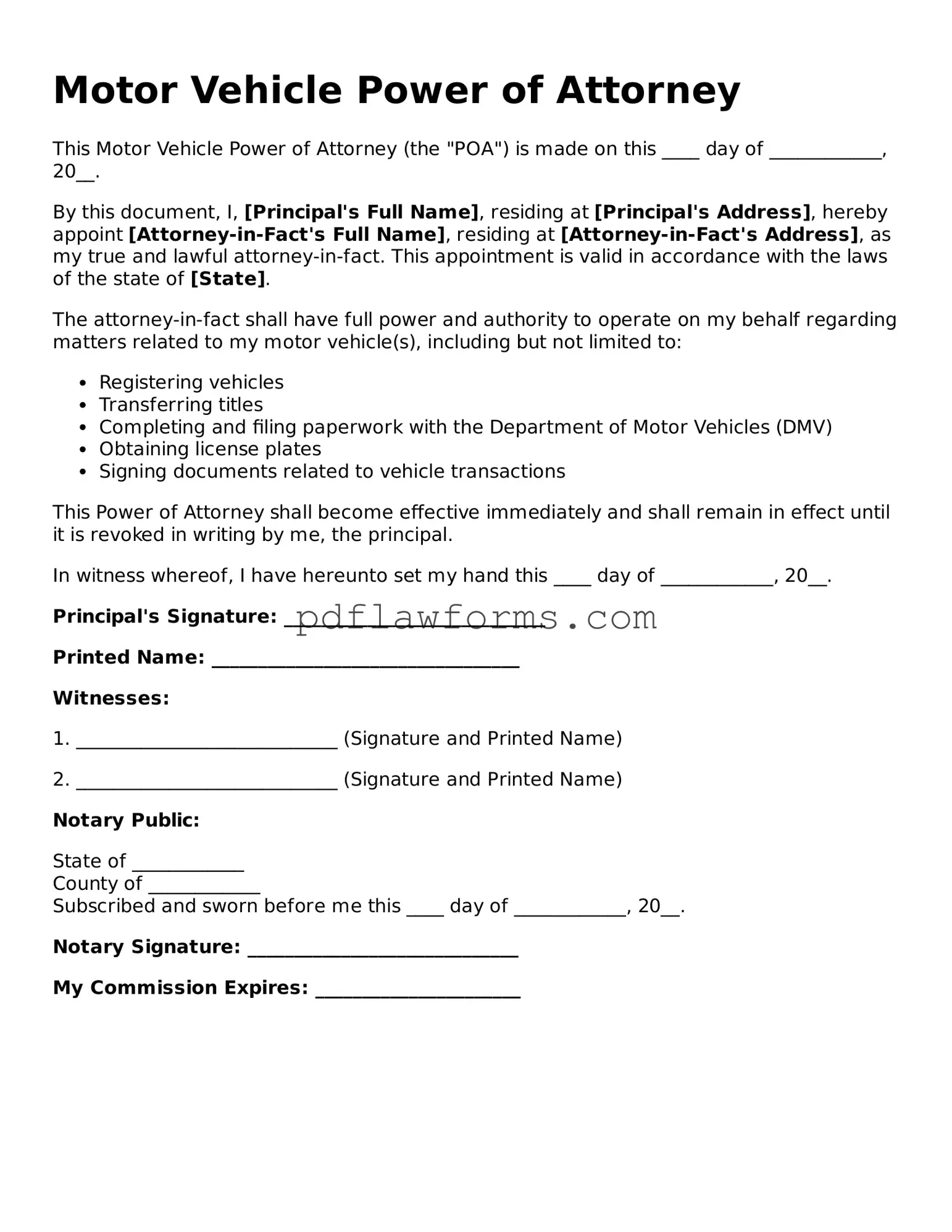Filling out a Motor Vehicle Power of Attorney form can seem straightforward, but many people make common mistakes that can lead to complications down the line. One of the most frequent errors is failing to provide complete information. This includes not listing the full name, address, and contact details of both the principal (the person granting the authority) and the agent (the person receiving the authority). Incomplete information can create confusion and may render the document invalid.
Another common mistake is neglecting to specify the powers being granted. The form should clearly outline what the agent is authorized to do, whether it’s transferring ownership, registering a vehicle, or handling other motor vehicle-related tasks. Without this clarity, the agent may not have the authority to act on behalf of the principal, leading to potential legal issues.
People often overlook the importance of signatures. Both the principal and the agent must sign the form for it to be valid. Additionally, some individuals forget to have their signatures notarized when required. Notarization adds an extra layer of verification, helping to prevent fraud and ensuring that the document is recognized by authorities.
Another mistake is failing to date the form. A date is crucial as it indicates when the authority is granted. Without a date, it can be challenging to determine the validity of the document, especially if disputes arise later. Always ensure that the date is clearly written and easy to read.
It’s also important to consider the state-specific requirements. Each state may have different rules regarding the Motor Vehicle Power of Attorney form. Some states may require additional information or specific language to be included. Failing to adhere to these requirements can result in the form being rejected or challenged.
Lastly, people sometimes forget to keep copies of the completed form. After filling out the Motor Vehicle Power of Attorney, it’s wise to make copies for both the principal and the agent. This ensures that everyone involved has access to the document, which can help avoid misunderstandings or disputes in the future.
